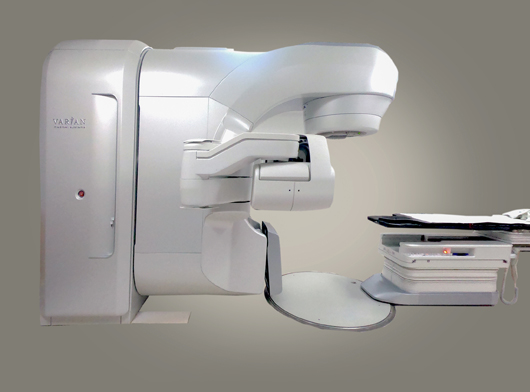Breast cancer, one of the most common types of cancer, can be devastating upon diagnosis. However, there are several treatment options available, including radiation oncology. This type of treatment uses radiation to destroy cancer cells. In this post, we will delve into what radiation oncology is and its role in treating breast cancer. Additionally, we will examine the different available options and how radiation oncology can be combined with other treatments. By the end of this read, you will have a comprehensive understanding of radiation oncology and its effectiveness against breast cancer.
If You’re Looking to Delve Deeper Understating: Dr. Michael Dattoli
What is Radiation Oncology?
Radiation Oncology is a specialized branch of medicine that focuses on using radiation to treat cancer. It utilizes high energy rays to kill or slow the growth of cancer cells and can be used alone or in combination with other treatments such as surgery and chemotherapy. The type of radiation therapy chosen depends on a patient’s individual diagnosis and the size, location, and stage of the tumor being treated.
When it comes to treating breast cancer specifically, there are two main types of radiation: Whole Breast Radiation (WBRT) and Partial Breast Radiation (PBRT). WBRT treats all areas/lobes within a woman’s breast, reducing recurrence rates significantly more than PBRT does. However, PBRT offers fewer side effects since it targets only specific areas within a woman’s breast tissue that have been identified as being at risk for recurrence by her medical team. Common side effects associated with both forms include skin irritation/discoloration around treated area(s), fatigue during treatment sessions, swelling/tenderness in treated area(s), and changes in breasts’ shape/appearance due to scarring caused by radiotherapy over time.
Before beginning any form of radiation therapy for breast cancer, accurate diagnostic processes involving mammograms, X-rays, ultrasounds, biopsies, etc., should be done to determine the exact location, size, and stage of tumors. During recovery from radiotherapy, patients should follow their doctor’s orders carefully, including returning regularly for follow-up appointments, checkups, reporting any changes, etc. It’s important to speak openly about concerns, fears, hopes, desires, wishes, and expectations when discussing these treatments with your doctor, as they’re here to help you make the best decisions possible regarding your overall healthcare.
Examining the Role of Radiation in Breast Cancer Treatment
Radiation oncology plays a crucial role in breast cancer treatment. It aims to target and eliminate cancer cells while minimizing harm to surrounding healthy tissue. This article explores radiation therapy’s functions, types, side effects, and recommended breast cancer treatment centers. We’ll also cover frequently asked questions, such as expected outcomes, short and long-term side effects, stress management tips, and the advantages of using radiation therapy as a treatment option. When making treatment decisions, individual patient situations are considered alongside current standards of care, personalized medication and therapy options, radiation therapy, and more. Don’t hesitate to consult radiation oncology experts to ensure you get the most out of your treatment.
Breast Cancer Treatment Options and Radiation Oncology
Radiation oncology is vital for treating breast cancer as it can kill cancer cells, shrink tumors, or stop them from growing. It is typically used after surgery or chemotherapy to reduce the risk of recurrence and relieve symptoms like pain. Treatment options vary depending on the type and stage of the cancer, and may include whole-breast radiation, partial-breast irradiation, or intraoperative radiotherapy. Each method has its own benefits and drawbacks, so patients should discuss thoroughly with their doctor before deciding which option is best for them.
The benefits of radiation therapy for breast cancer patients include increased efficacy compared to other forms of treatment, decreased risk of recurrence, improved quality-of-life, shorter treatment times, targeted delivery to reduce side effects, decreased cost, and improved morale due to fewer external signs associated with traditional surgeries. Side effects can include fatigue, localized skin reactions, changes in appetite, and discomfort at delivery sites. Long-term complications may include organ damage and scarring, requiring close monitoring and potential interventions accordingly.
Recent advances in brachytherapy provide higher doses of radiation directly to tumors while significantly reducing potential long-term effects. Beam shielding has also been developed for more precise targeting while protecting healthy tissues. Ongoing research efforts worldwide continue to improve outcomes for breast cancer patients with the help of radiation oncology.
Understanding the Impact of Radiation Oncology for Breast Cancer Treatment
Radiation oncology is a valuable tool in the fight against breast cancer. It is an effective form of treatment for many people diagnosed with the disease, and radiation oncologists are continuing to refine the way that radiation therapy is given for breast cancer and other cancers including studying ways to further shorten treatment times without reducing the overall effectiveness of the treatment. In this article, we will explore how radiation oncology can be used in treating breast cancer, covering its benefits, side effects, and long-term consequences.
Read More: Radiation Oncology for Brain Tumors-Treatment Options
Radiation oncology can be used as part of an individualized plan to treat breast cancer, depending on the stage, type, and other factors. Studies have shown that it is associated with improved survival rates for those diagnosed with breast cancer. Radiation therapy can be used as a stand-alone treatment or in conjunction with other treatments such as chemotherapy, hormone therapy, or surgery. It has fewer side effects than traditional chemotherapy and is often better tolerated by patients.
When considering radiation therapy for treating early-stage breast cancer, there are several different types available which use different techniques to target tumors while limiting damage to healthy tissue around them: external beam radiation (EBRT), brachytherapy (internal radiotherapy) or stereotactic body radiotherapy (SBRT). Each type has its advantages and disadvantages, so you should discuss these options carefully with your doctor before making any decisions about which type of radiation would best suit your situation.
In addition to traditional forms of radiation therapy such as EBRT or brachytherapy, there are also advanced technologies now available that improve outcomes when treating recurrent or metastatic forms of breast cancers such as proton beam therapy (PBT) or intensity-modulated radiotherapy (IMRT). These technologies allow doctors to focus higher doses of radiotherapy onto tumors while minimizing damage done to healthy tissue surrounding it; improving outcomes while reducing side effects in some cases.
Finally, it’s important not only during but also after completing a course of radiation oncology that supportive care measures be taken into account – diet plans should focus heavily on nutrient-rich foods; exercise programs should focus more heavily on targeting cardio exercises over strength training; mindfulness practices such as yoga may help reduce stress levels; any medical issues related directly from receiving/completing treatments should always be monitored closely by medical professionals, etc. All these elements combined will help aid recovery time following a course of Radiation Oncology treatments, helping individuals reach optimal health states post-treatment quicker than without taking these additional steps into account!
In Short
Radiation oncology is a vital treatment in the fight against breast cancer. It is an effective form of treatment that can be used on its own or in combination with other treatments, depending on the individual diagnosis. This article explores radiation therapy’s functions, types, side effects, and recommended breast cancer treatment centers. Additionally, we examine its role in treating breast cancer and discuss advances in brachytherapy and beam shielding for more precise targeting of tumors while protecting healthy tissue. By understanding radiation oncology’s benefits and risks associated with it, patients can make informed decisions about their care alongside their medical team. If you or someone you know has been diagnosed with breast cancer and would like to explore radiation therapy as a potential option for treatment, consult your doctor to discuss your individual needs today!



